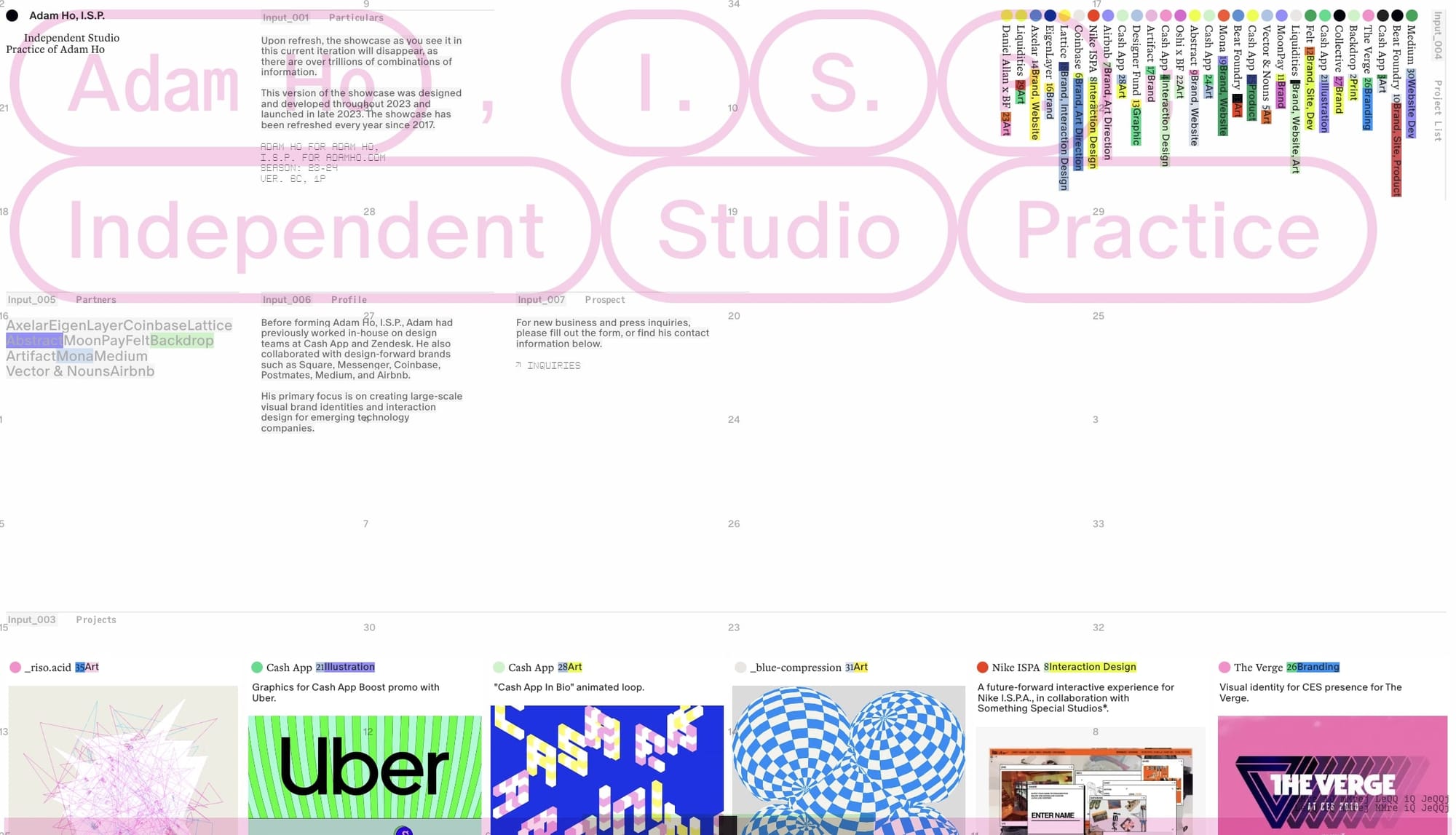How to get graphic design clients (in 5 steps)
Looking to scale your design business? Learn how to get graphic design clients and scale your freelancing business, or agency, in 2024.

No matter how long you’ve been a graphic designer, the quest for new clients can be an ongoing challenge. You might be a fantastic designer, but so are all the other professionals vying for attention. Add to that that you may be glued to your desk throughout the day, leaving little time to explore new growth avenues — and you may feel overwhelmed by the prospect of searching for new clients.
Regardless of your situation, it’s possible to learn how to get graphic design clients without investing heavily in ads or spending all day on the phone. A few tried-and-true strategies can help you earn new business and develop lasting relationships with your ideal clients.
From building a portfolio to productizing, the strategies below will get you started on the right foot. Put in the work on the front end, and you can continue expanding your client roster — especially if you put the right systems and software in place to assist you.
Let’s dive into the details of gaining new graphic design clients.
Are graphic designers in demand?
Graphic designers are the creative minds behind a wide range of visual concepts encompassing everything from layout to production design. Whether collaborating within a team, specializing in a particular department, or going solo as freelancers, they add their creative touch to marketing materials, internal graphics, brand assets, packaging, website visuals, signs, and beyond.
As for the career prospects, the horizon is promising. The demand for graphic designers is consistent and growing, CareerFoundry reports. From construction to marketing and startups, every sector imaginable is seeking the talents of graphic designers who can bring their ideas to life visually.
For graphic designers looking to strike out on their own and build a design business, the road to success has a few more stops than it might as a W-2 employee. However, the rewards of entrepreneurship — freedom, flexibility, and unlimited income — are worth it for those craving a different path.
5 steps to get graphic design clients in 2024
Here are the five steps to get graphic design clients:
- Create a portfolio
- Build a list of ideal clients
- Run a personalized cold email outreach campaign
- Send proposals
- Scale with productizing
Let’s take a deeper look at each step.
1. Create a portfolio
Snagging graphic design clients starts with a vital asset: your portfolio. Compile your best work in a digital format showcasing how you transformed ideas into eye-catching visuals.
Although your designs will do a lot of the talking in your portfolio, you should also explain each concept and why you took the approach you did. Discuss what the project entailed, how you approached the design process, and the extent of your role in each project.
It can be helpful to think of your portfolio as a collection of case studies demonstrating how you took a design challenge, came up with viable solutions, and produced measurable results for a client. For example, if your client needs ads created for a social media ad campaign, you can showcase how you helped the client increase leads and generate new revenue. Attaching metrics to your designs illustrates that you’re not just a great graphic designer but also a marketing professional who understands how to evoke a response from a target audience.
When creating your portfolio, the goal is not to include every project you’ve ever worked on but rather only the projects representing your most impressive work. Over time, continue adding to your portfolio to build a repository of your creative endeavors.

To promote your portfolio, share it across social media platforms like LinkedIn and X, on your blog, in email newsletters, and via other channels. Dedicate a page on your website to your portfolio so potential clients can see samples of your work, and include a call to action button to “get a quote” to make it easy for prospects to request your services.
If you’re new to portfolio creation, check out this collection of design portfolio resources from Dribbble.
2. Build a list of ideal clients
Once you’ve got your portfolio in order, it’s time to start building a list of ideal prospects. You don’t need to work with every client under the sun; instead, aim to work with the people and companies you think would benefit most from your design talents.
Niching down can be a great way to expand your portfolio in a specific industry. This approach lets you become the go-to graphic designer in your niche, increasing your chances for referrals and recommendations from happy clients.
For example, you could work with marketing agencies that need white-label graphic designs and build a steady flow of work from agencies requiring ongoing designs. Or maybe work with local businesses that need help building an online presence with social media content, infographics, and blog visuals. Choose a niche that fires you up and makes it easy for you to do great work so you can begin building your portfolio in that niche.
With your desired niche in mind, use these strategies to identify specific businesses you can target with outreach campaigns.
- Leverage LinkedIn: Scout potential clients on LinkedIn, connecting with decision-makers and influencers in your niche. Join LinkedIn groups, engage with relevant content, and add new connections to your network. One caveat: Don’t go overboard with sales pitches. Add value to conversations, and personalize your connection requests with friendly notes that make it about them, not you.
- Explore freelance platforms: Set up profiles on platforms like Fiverr and Upwork to find projects that align with your skills, interests, and niche. You’ll have more competition and might have to undercut your pricing initially, but these platforms can help you get your foot in the door with the right clients.
- Locate contact information: Use platforms like Sales Navigator, Overloop, and Hunter to find email addresses and other contact details for decision-makers in target companies. With that information, you can craft personalized outreach emails to introduce yourself and your design services (more on that in step 3).
- Attend local networking events: Explore local networking events, both virtual and in-person, to connect with businesses in your community. Increase your visibility by adding a portfolio link or QR code on your business card, and follow up with new contacts after events.
3. Run a personalized cold email outreach campaign
The words “cold email outreach” might evoke images of email blasts sent to every prospect on your list. That’s not what we’re doing here, however. While you can have a go-to email outreach template, it’s crucial to personalize every email so prospects feel like you’re sending it directly to them and not to thousands. Here’s a basic outline to guide you in creating your email template.
Write a compelling subject line
Your email won’t mean much if nobody reads it. You need a great subject line that intrigues people enough to open your email. Three elements to consider include:
- Personalization: Add a first name or other details about the prospect.
- Relevancy: Make sure the content is of interest to the prospect.
- Testing: Test out different versions of your subject line with different audience segments to see how each performs. Make any necessary adjustments for future campaigns.
Check out this guide to crafting email subject lines, or try an email subject line generator like CoSchedule’s.
Add an introduction
Introduce yourself briefly — who you are, what you do, and why you’re emailing. Create rapport by mentioning a common point of interest or something you noticed about the prospect’s graphic designs; for instance, “I saw your latest social media post on [topic], and it caught my interest!
Showcase your expertise
Highlight your approach to graphic design and how it aligns with the prospect's potential needs or niche — something like, “I’ve worked with clients in [niche industry] to create social media content that helps them generate more revenue.”
Include personalization
Customize your email based on your research about prospects and their businesses. Reference specific projects, achievements, or challenges they may face based on your industry knowledge and other clients you’ve worked with.
Add value
Offer insights or suggestions tailored to their niche or design needs. Propose a solution to a potential pain point they might be facing.
Include a call to action
Extend an invitation to discuss their design needs with a free consultation. Offer to create a sample design or send case studies showcasing your work.
Sample email template for cold outreach
Here’s an example of an email template you can use when reaching out to find new clients:
Subject: This freebie has your name on it
Hi, [Prospect's Name],
I recently came across your latest social media post on [specific topic], and I couldn't help but take an interest in your innovative approach.
Allow me to share a bit about myself — I've had the privilege of working with clients in [niche industry], collaborating on projects that revolve around creating engaging social media content. The result? Not just visually appealing designs but tangible results, such as helping businesses generate 3x more revenue.
It’s not magic. It’s just great design.
I've got some ideas for ways to uplevel your content, too, utilizing the tried-and-true methods I use with my clients.
So, here's a thought: How about we schedule a quick call to discuss some ideas? I’ll even throw in a [insert your freebie here, such as a free design or a coffee gift card] for your time!
Just grab a spot on my calendar to go over the details.
Looking forward to connecting!
[Your Name]
[Your Contact Information]
[Link to Your Portfolio/Website]
Of course, you don’t want to copy this word for word. It’s important to personalize it to the person and business you are reaching out to.
4. Send proposals
Do you have some promising prospects you’ve chatted with? Don’t delay in sending a graphic design proposal outlining the next steps. Your prospect might be considering multiple options for graphic designers, so getting your name to the top of the list is essential.
Here are the primary elements to include in your proposal:
- Introduction: Remind the prospect who you are, emphasizing past design projects relevant to their needs.
- Review of their goals: Reiterate the prospect’s goals, pain points, and specific needs, demonstrating that you listened actively on your consultation call. Convey that you have a solution to their design challenges.
- Scope of work: Detail the work you’ll provide based on the project objectives, such as social media content, web graphics, and blog creatives.
- Timelines: Outline milestones you’ll hit for key deliverables, setting clear expectations so there’s transparency and accountability in the process.
- Pricing: Provide a quote for your services and payment terms, detailing fixed or hourly costs, deposit policies, and timelines for final payment.
- Portfolio: Link to relevant case studies or portfolio samples that align with the prospect’s goals, providing real-world examples of your expertise and contextualizing your capabilities.
- Next steps: Include a payment link and an invitation to reach out with any questions. Make it easy to get paid and kick off your project.
Here’s one more tip: Explore tools like Copilot, a freelancer-friendly platform that streamlines paperwork, project management, and more. An organized system for proposals, contracts, invoices, and taxes can significantly enhance your freelance operations.
5. Scale with productizing
Eventually, you might reach a point in your graphic design business where you’re ready to scale to the next level — and productizing your services can be an excellent way to do just that. Productization involves packaging your services as standardized, sellable products, just like you would if you were selling a tangible item.
Benefits of productizing
- Scalability: Productizing allows you to standardize graphic design components and handle a higher volume of clients without a proportional increase in effort.
- Consistency: Standardizing your services ensures consistent quality across all projects, helping you establish a trustworthy and reliable brand identity.
- Efficiency: Productization allows you to work more efficiently because you won’t be starting from scratch with every client. Instead, you can leverage pre-defined processes and templates.
- Simplified selling and buying process: Bundling services makes it easier to sell your services and demonstrate your value proposition. It also simplifies buying for prospects by packaging unique product offerings, each with a clear scope of work and pricing — no surprises or hidden fees.
How to productize your graphic design services
- Pinpoint your most requested and profitable services to form the core offerings of your productized model.
- Develop standardized processes for each core service. Outline the steps, timelines, and deliverables clearly to create a consistent workflow.
- Package your services into distinct offerings with transparent pricing. Consider tiered packages to cater to different client needs and budgets.
- Develop templates for common design elements or project components to speed up your workflow and guarantee a cohesive look across projects.
- Leverage automation tools like Copilot for routine tasks, such as invoicing and project management.
- Integrate your productized services into your marketing strategy, showcasing benefits, testimonials, and success stories.
- Collect feedback from clients as you implement your productized services. Use this input to refine and improve your offerings over time.
Example of a productized graphic design platform:

Frequently Asked Questions (FAQ)
Where is the best place to find clients for graphic design?
- Create profiles on freelance platforms like Upwork, Fiverr, and Freelancer.
- Leverage social media platforms like LinkedIn, Instagram, and Twitter to showcase your portfolio, engage with prospects, and join design communities.
- Attend local or virtual networking events, conferences, and meetups.
- Tap into your professional network, and request referrals from satisfied clients or colleagues in related industries.
- Maintain a solid online presence by creating a professional portfolio website where potential clients can explore your work.
- Reach out to businesses through personalized cold email campaigns, showcasing your skills and offering tailored solutions.
How do I market myself as a graphic designer?
Combine the strategies above to develop a marketing strategy that’s easy to implement. Turn to time-saving tools that automate email follow-ups and appointment reminders.
You can also incorporate inbound techniques like starting a blog with industry keywords to attract prospects searching for your services. Share tips, tutorials, and insights to position yourself as an authority in the field.
Lastly, request and showcase testimonials from satisfied clients on your website and marketing materials. Positive reviews build trust.
How do you pitch a client for graphic design?
- Begin with a brief introduction, stating who you are and expressing genuine interest in their business or project.
- Highlight relevant experience and showcase your portfolio, emphasizing projects similar to what they are seeking.
- Demonstrate a clear understanding of their goals, pain points, and design needs. Reference information gathered from previous interactions.
- Communicate the value you bring to the table. Explain how your design solutions can address their challenges and contribute to their success.
- Customize your pitch based on research about the client and their industry. Reference projects or trends that align with their brand.
- Propose solutions. Include a sample design, a unique approach, or a detailed plan for their project.
- Conclude the pitch with clear next steps, whether scheduling a call, sending additional information, or discussing the project further. Make it easy for them to take action.
Build your thriving graphic design business with Copilot

Your graphic design business will be an ongoing venture as you refine your processes and determine the best target audience for your services. One critical element throughout a business startup is having client and project management tools to build repeatable systems and streamline onboarding, payments, and client communications.
Enter Copilot, a comprehensive platform tailored for graphic design freelancers and agencies. With Copilot, you can:
- Optimize client onboarding: Simplify the transition from prospect to active project with tools for seamless client onboarding.
- Manage relationships: Stay on top of multiple projects effortlessly, communicate with clients, and foster trust and reliability.
- Get paid: Copilot provides user-friendly tools for streamlining payments, invoices, and client billing, helping you manage your books.
- Show task and project progress: Keep clients informed with features that integrate with project management tools, presenting work progress in an organized manner.
As a graphic designer, you have a lot on your plate — from securing new clients to managing projects and collecting payments. Having a platform like Copilot in your corner can make it much easier to run your business and scale, with tools for onboarding, relationship management, productization, invoicing, and reporting.
Copilot frees you up to focus on high-impact activities like project work and business growth, so you don’t have to get caught in the weeds with back-end processes. Consider it your secret weapon for starting and growing a graphic design business that fuels your creative passions and eliminates roadblocks to success.
To learn how to get graphic design clients with Copilot, sign up for a free trial.

